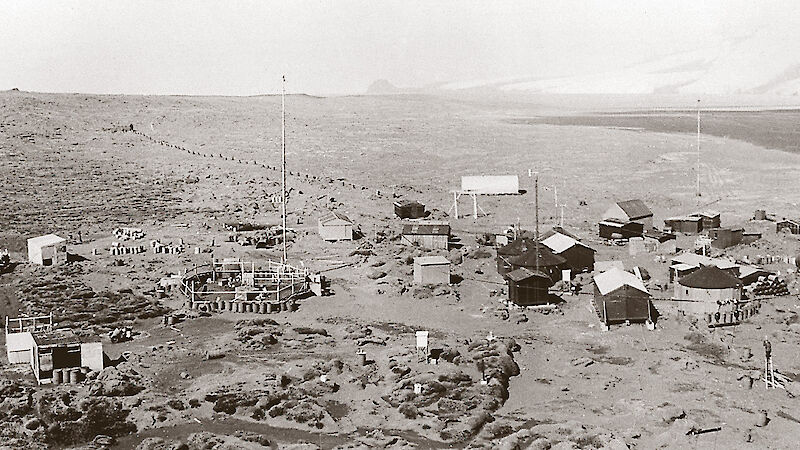The following is an extract from Antarctic News Bulletin No 4, 1951
Flight to Adélie Land — The Australian Minister for External Affairs, Mr RG Casey, announced on the 21st October that a 1500-mile pioneering flight from Hobart to Adélie Land on the Antarctic mainland is planned in January, 1952. Captain PG Taylor who will be in command will fly the same Catalina “Frigate Bird II” in which he flew to Chile some months ago. Although aircraft have been used on the Antarctic continent before, no aircraft has yet flown from a continental land base to the Antarctic.
The first lap will be from Hobart to Macquarie Island, a distance of 500 miles; and the second from Macquarie to Adélie Land, approximately 1000 miles. A Navy vessel will probably be stationed at some point on this second section. Captain Taylor proposes to consult American airmen with polar flying experience before commencing his own flight.
A successful flight would teach us a great deal about Polar navigation, said Mr. Casey, and how best to send relief if needed to Australian Antarctic bases. Later, an air survey of the Australian sector would be made.
Australia plans to establish a permanent base on the Antarctic continent within six years, but realises that she must move quickly if she wishes to hold the land — nearly three million square miles — to which she lays claim.
In the subantarctic — The Australian Antarctic Division is trying to obtain a vessel to replace HMAS Labuan, which was so severely buffetted on its Heard Island trip early this year that the Navy withdrew it from subantarctic service. It is hoped that construction of the new Antarctic ship, plans for which are being drawn up, will commence early in 1952.
Meanwhile the Division is advertising for 30 men, including scientists and carpenters, to replace in January the men at present on Heard and Macquarie Islands.
The Heard Island party is breeding sledge-dogs from huskies left by the French expedition. An experienced dog attendant with some veterinary knowledge and, if possible, skilled in sledge-driving is wanted to train the young dogs for forthcoming Antarctic work, maybe on the Antarctic continent itself.
9,000 ft high Big Ben has been sending up smoke and steam from a spot halfway up the mountain-side, where previously there was an unbroken slope of snow and ice. An attempt to investigate the new crater was barred by deep and wide crevasses.
An attempt was also made to reach Long Beach, the most southerly part of the Island. Early in September a depot hut built on sledge runners was taken in stages by dog-teams across the snow and glaciers, and established 200 ft above sea-level. An attempt early in October to push on to Long Beach was defeated by blizzards and poor visibility.
Three drifting icebergs have been seen at Macquarie Island this spring. The largest, which was a quarter of a mile long and a hundred feet high, was sighted east of Lusitania Bay at the southern end of the island. Another ran aground and broke up after twelve days on the Judge and Clerk Islands, two bare rocks about eight miles north of the ANARE Station. The third moved north east past the Station and provided a field day for photographic enthusiasts.
This is the first time that icebergs have been sighted by ANARE personnel off Macquarie Island.

